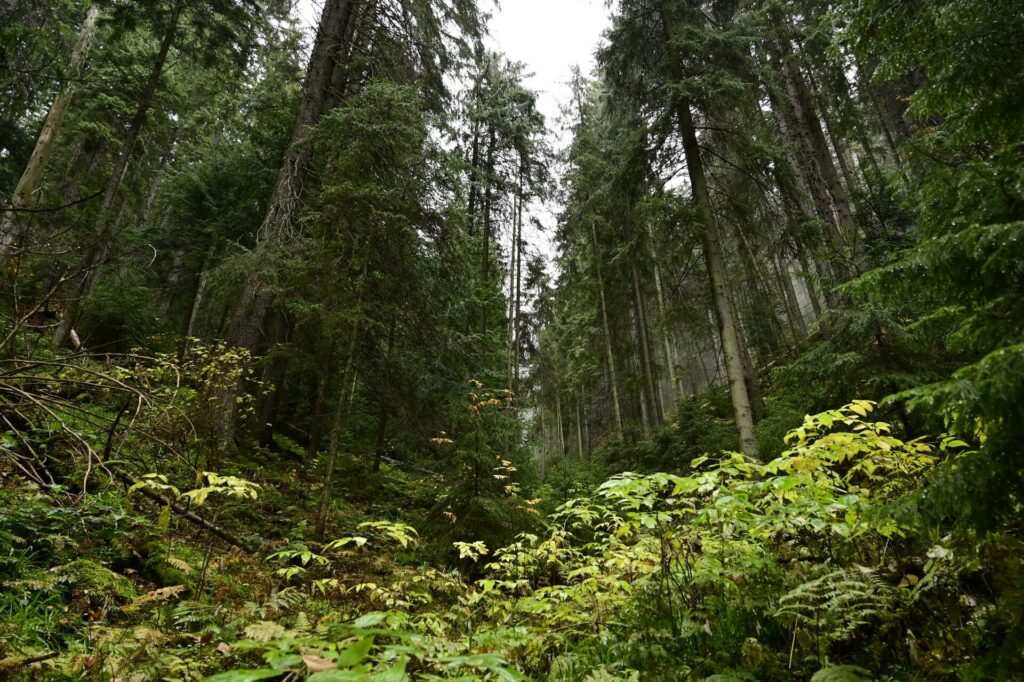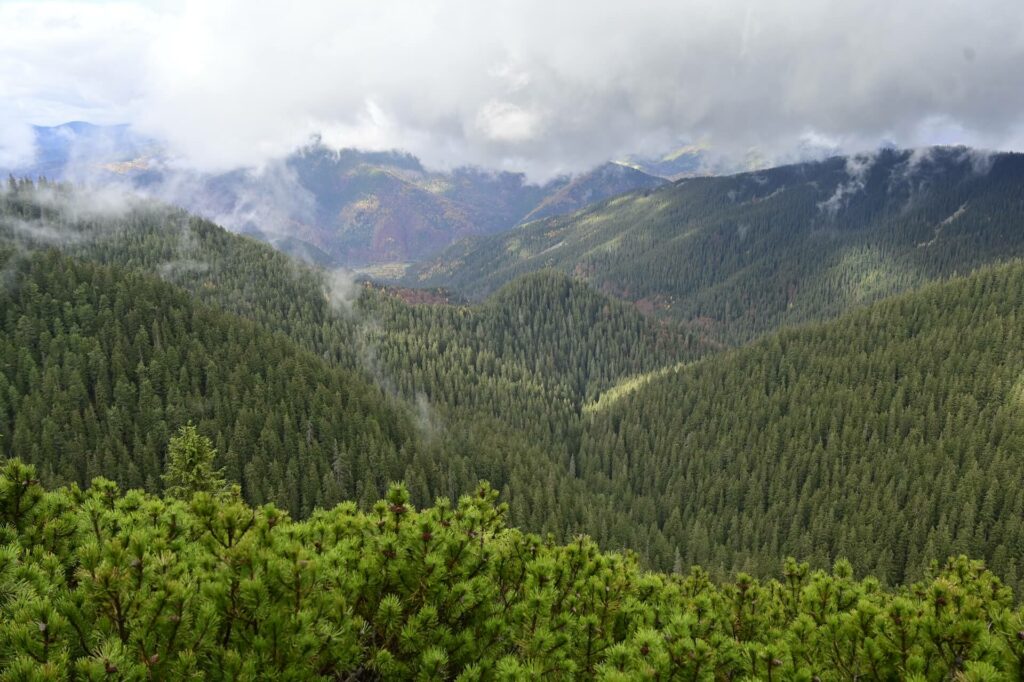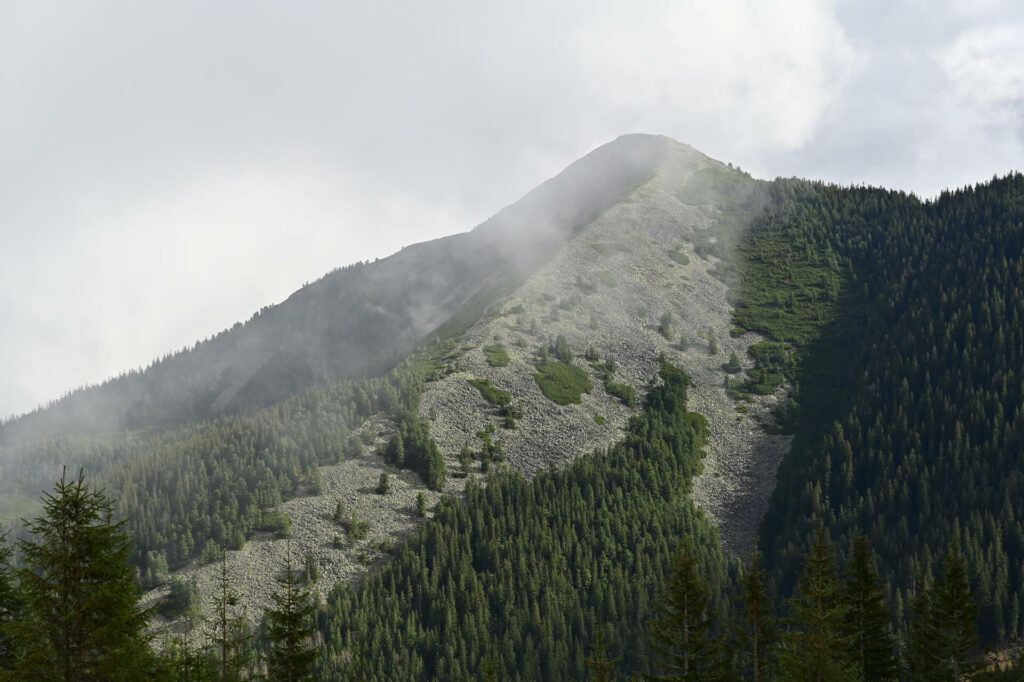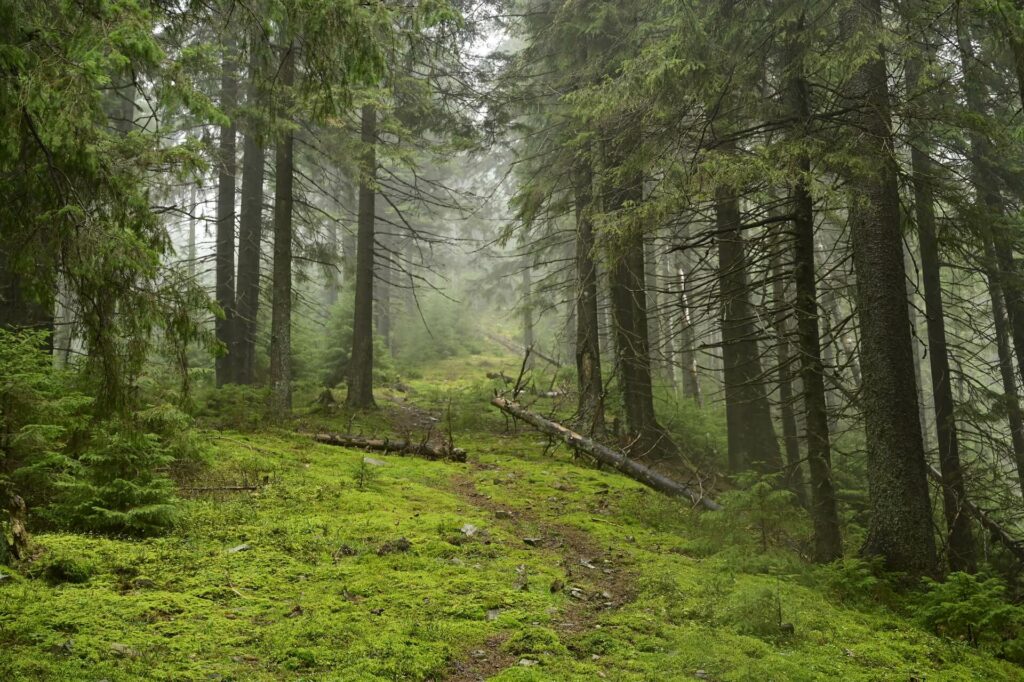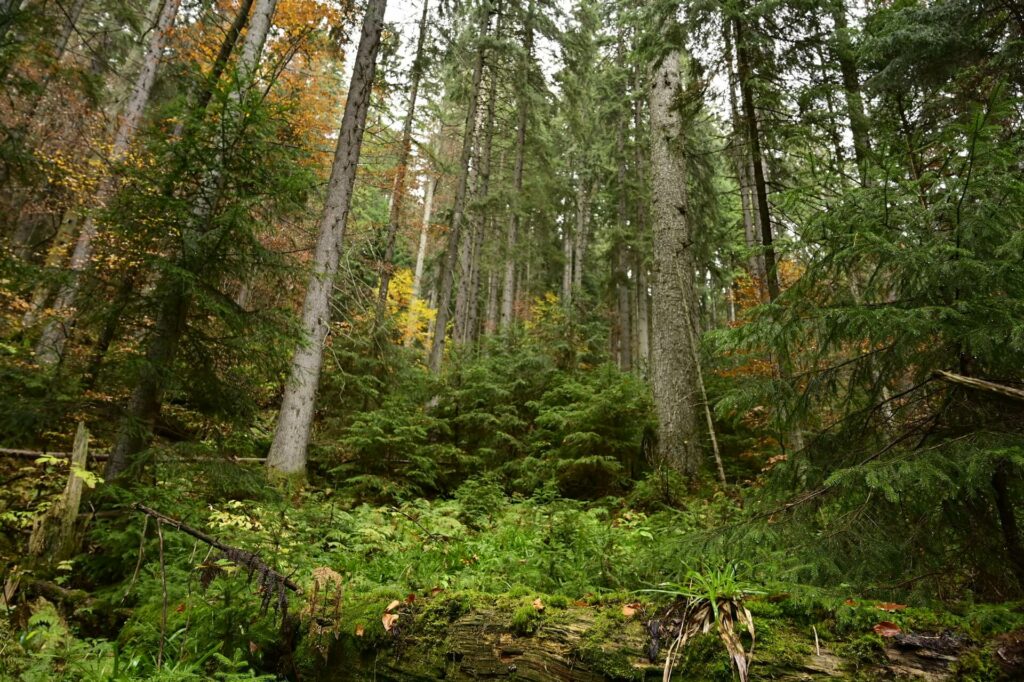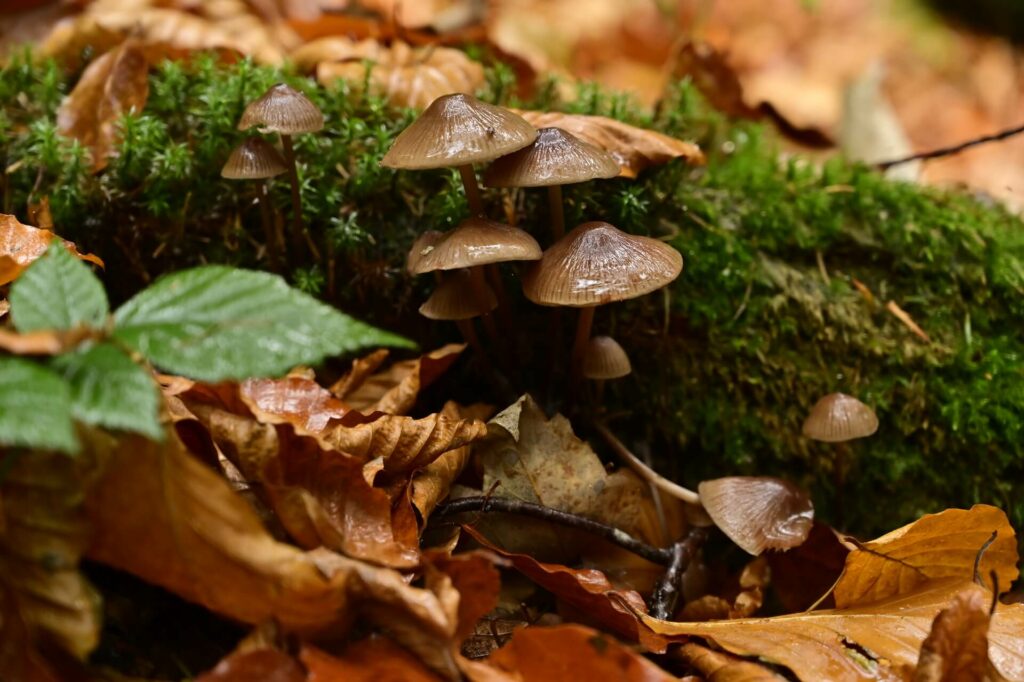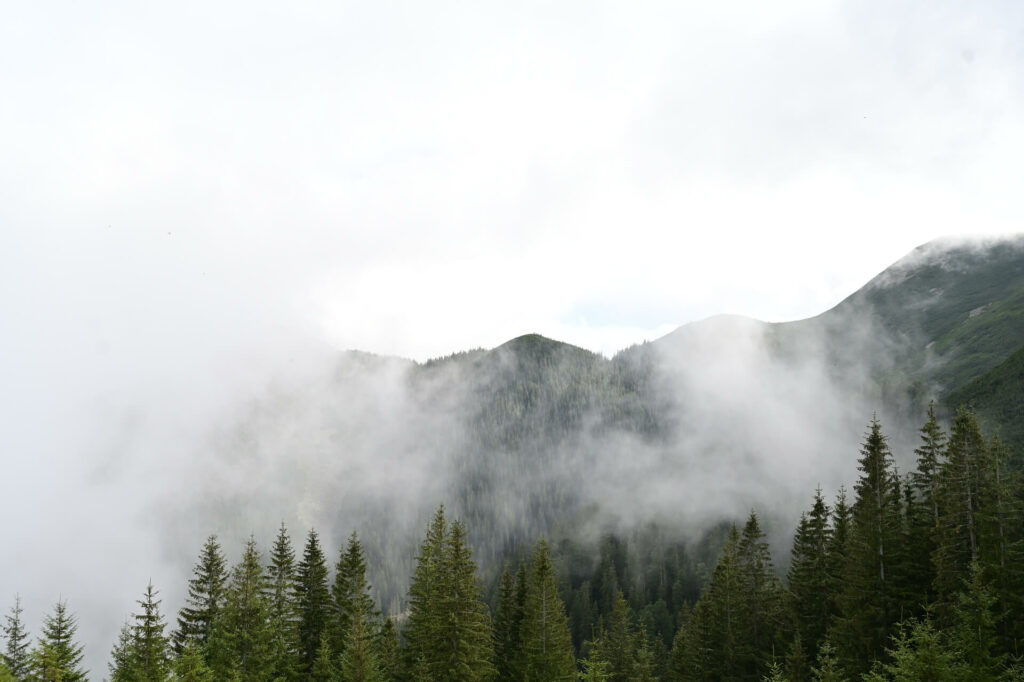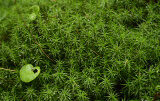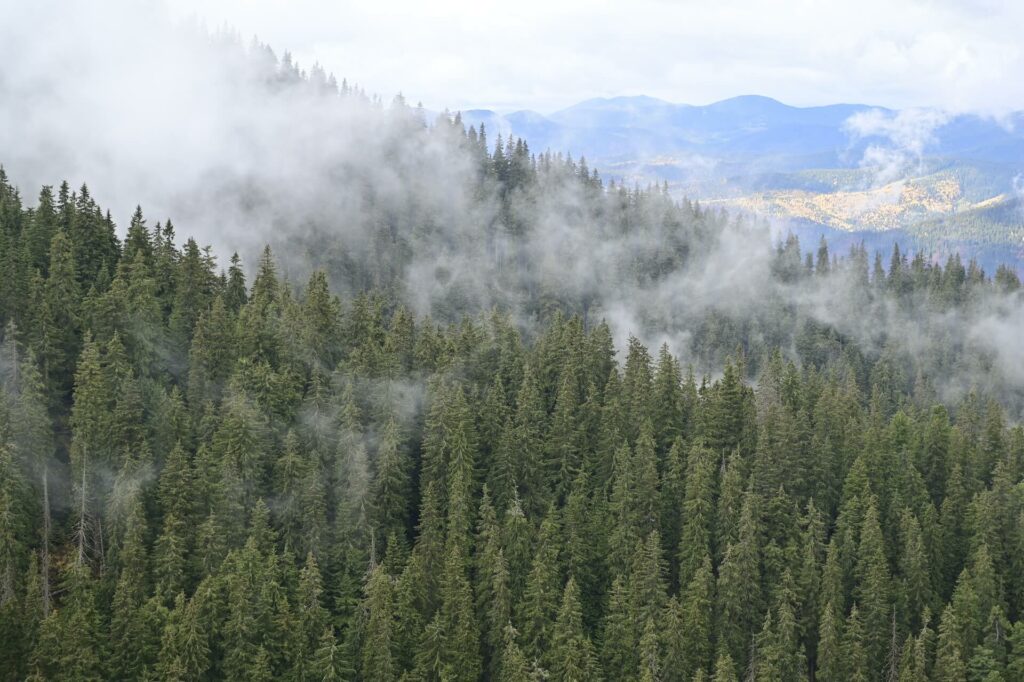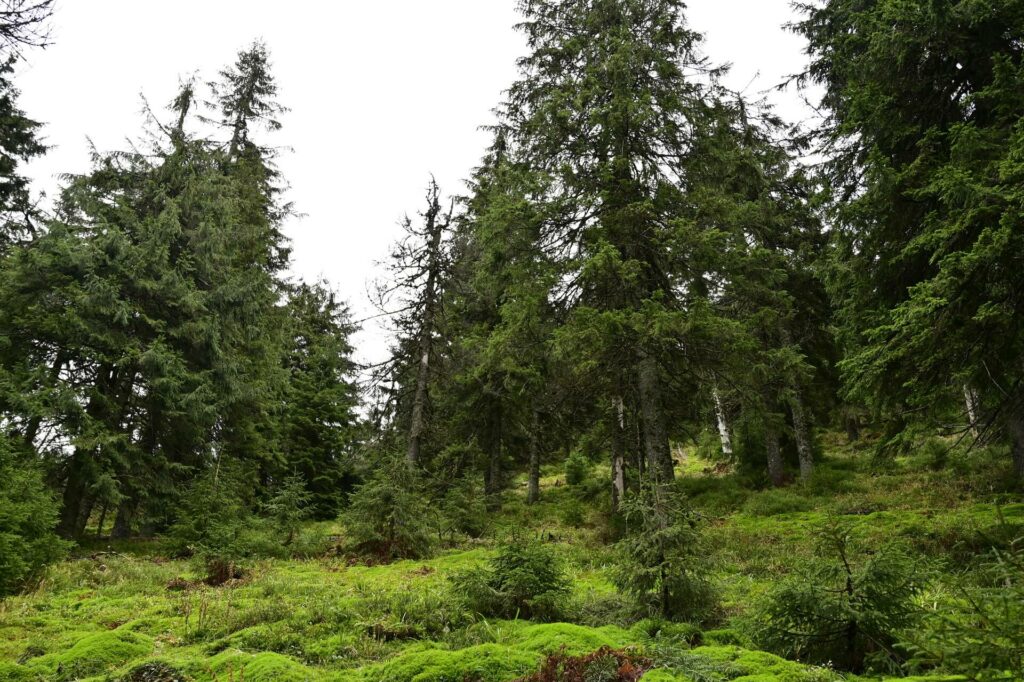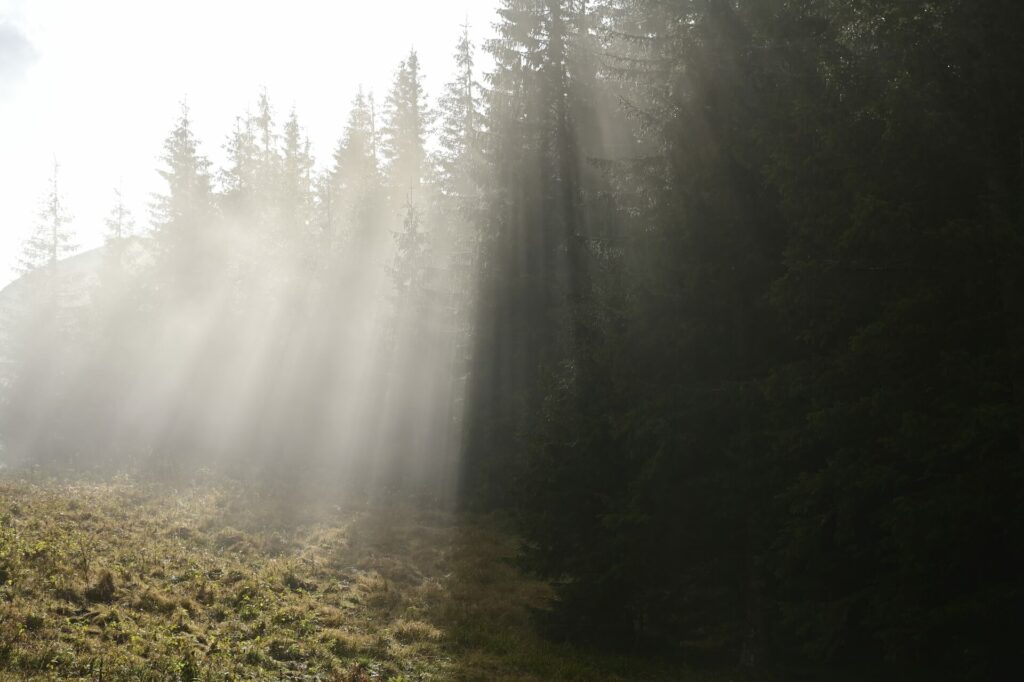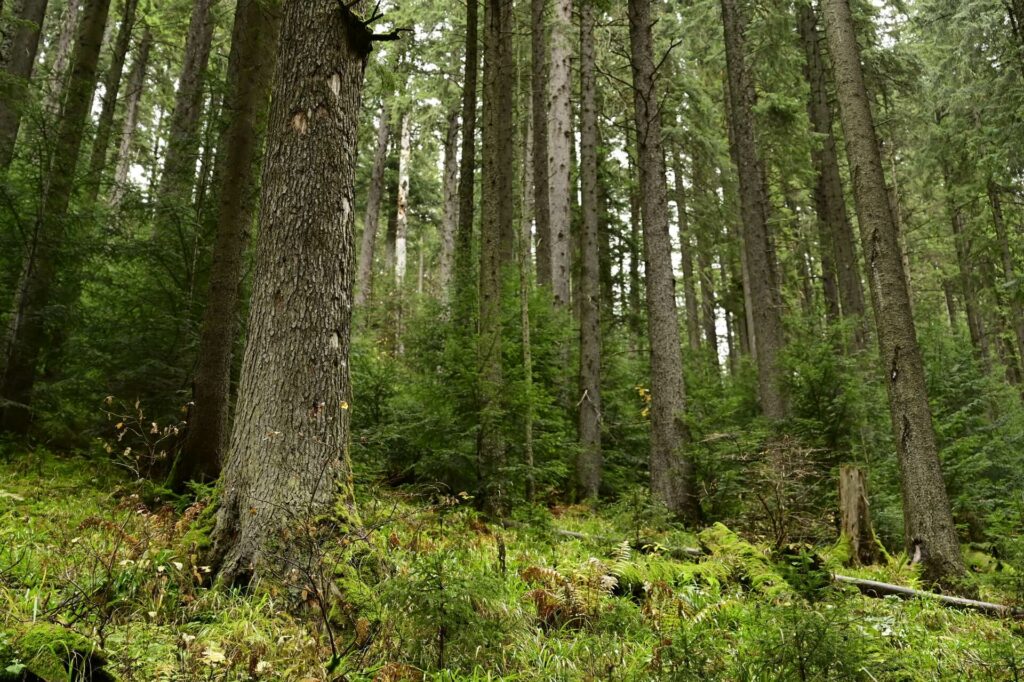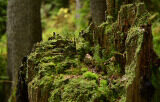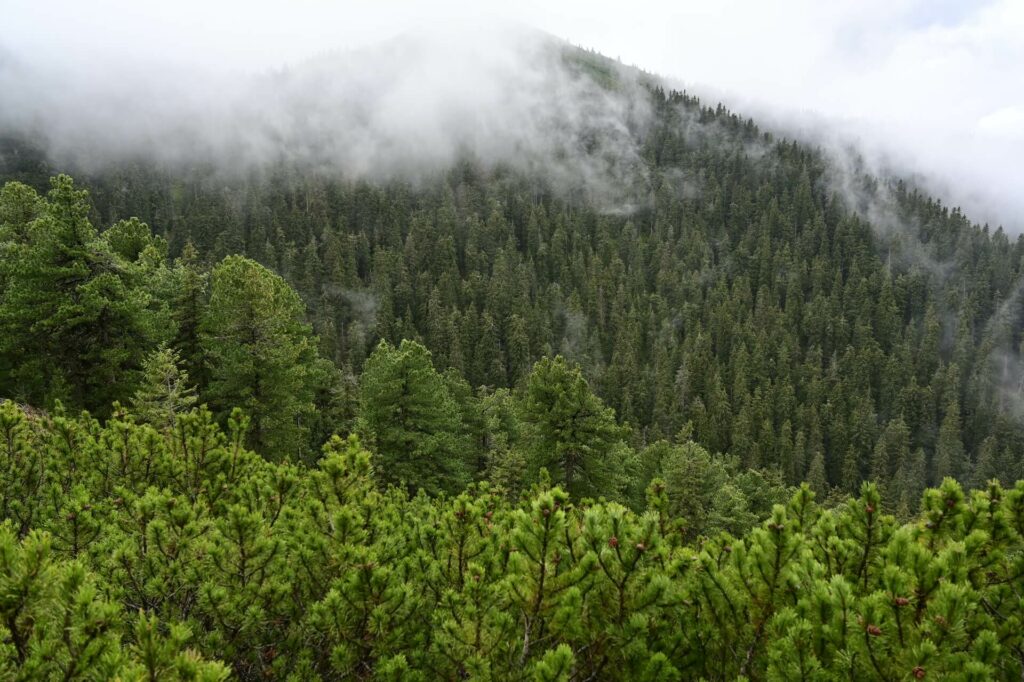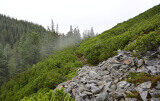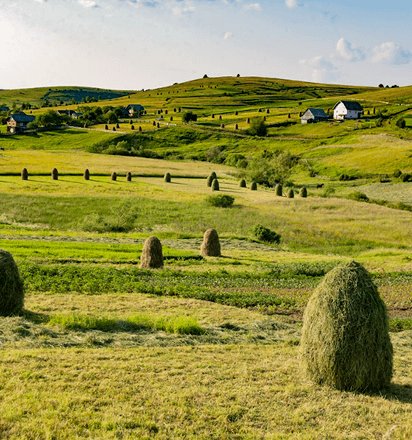Gorgany
The Gorgany Nature Reserve gets its name from the remarkable stone and rock formations that make up the central and northern ridges of the distinctive mountains in the area. With foliage like fine moss and lichens, the peaks create an ethereal and almost other-worldly atmosphere that amazes visitors on first sight.
In 1935, the first Gorgany Cedar Reserve was founded by the Metropolitan Archbishop Andrey Sheptytskyi. The reserve’s land is now highly protected, requiring special permission to visit.
Park area 53,442 Sq km.
The Gorgany Nature Reserve is home to a portion of the Ancient and Primeval Beech Forests of the Carpathians and Other Regions of Europe – a UNESCO World Natural Heritage Site. Flora and fauna in the reserve are distinguished by their adaptability to extreme environmental conditions. The local climate is typically much harsher and wetter compared to the southern slopes of the Carpathians.
Many rare, endemic and relict species of flora can be found in the Gorgany Nature Reserve. Primeval forests contain ample amounts of dead and decaying wood, which creates crucial habitats for a wide diversity of fungi, lichens, and other organisms. Additionally, these habitats also support some of the most vulnerable large mammals found in the Carpathians, including bears, wolfs, lynxes, and red deer.
Overcoming the challenges caused by war. Since the start of the full-scale Russian invasion of Ukraine, the Gorgany Nature Reserve has provided shelter for internally displaced persons (IDPs). It was a difficult task for the park to adapt to become a refuge center: Frankfurt Zoological Society (FZS) offered support in preparing accommodation for the hundreds of people seeking refuge from the effects of the war. With support from partners in Romania, Germany, Poland, and Slovakia, FZS provided essential items including medicines, warm clothes, hygiene products, and food supplies. The organization also provided ongoing supplies of food and hygiene products for IDPs residing in the reserve’s temporary housing and those residing in surrounding communities.
In order to ensure operations can continue in the event of a power outage, FZS also purchased and provided a generator and fuel to allow the park’s administration teams to continue their essential work without interruption.
Support for creating management plans. The Frankfurt Zoological Society (FZS) aims to conserve wildlife and ecosystems, with a focus on safeguarding protected areas and outstanding wild places. FZS provides support to the Gorgany Nature Reserve as it carries out essential conservation tasks.
The conservation efforts in the Gorgany Nature Reserve are coordinated under the “Conservation of highly valuable primeval and old-growth forests in selected national parks in the Ukrainian Carpathians” project, a collaborative initiative aimed at effectively organizing and managing conservation work in the nature reserve. This consists of a multi-stage process:
- Assessment of the ecological, sociological, and cultural values and resources of the nature reserve, including their conditions, threats, and impacts.
- Formulating a 10-year conservation strategy.
- Creating a five-year action plan to maximize results in preserving high conservation value aspects of the nature reserve.
The project’s development and organization are being carried out by a team of FZS experts, nature reserve specialists, and local communities and other stakeholders. Management plans for the project are currently under development.
Biodiversity monitoring. To qualitatively monitor the state of biodiversity in the Gorgany Nature Reserve, FZS utilizes the Spatial Monitoring and Reporting Tool (SMART) system. The system helps to collect, measure, and evaluate biodiversity data effectively and efficiently. Smartphones and other necessary equipment were purchased and provided to park security personnel. Additionally, training and ongoing user support is provided. Since 2021, camera traps have been used to monitor large predators.
Construction and reconstruction. As part of the Support to Nature Protected Areas in Ukraine (SNPA) project, of which FZS is the main partner, the construction of a modern visitor center is planned to improve the infrastructure and attractiveness of the nature reserve to tourists and other visitors.
Operating cost support. Due to constraints on state funding as a result of Russia’s ongoing invasion of Ukraine, FZS has been providing ongoing financial support for the implementation of the conservation plan in the nature reserve since May 2022. This assistance includes procuring office space, communications support, fuel expenses, and maintenance, repair costs for vehicles, and funding for electrical and computer equipment.
Improving the ability to perform environmental protection tasks. As part of the SNPA project, vehicles and uniforms for security personnel were purchased and provided, as well as computer and IT equipment for park employees.
What do we do
By combining international experience with local knowledge and expertise, we support the preservation of the large areas of pristine and near-pristine nature in Ukraine. We mainly do this by supporting projects in major protected areas such as national parks, biosphere reserves, and large nature reserves.
